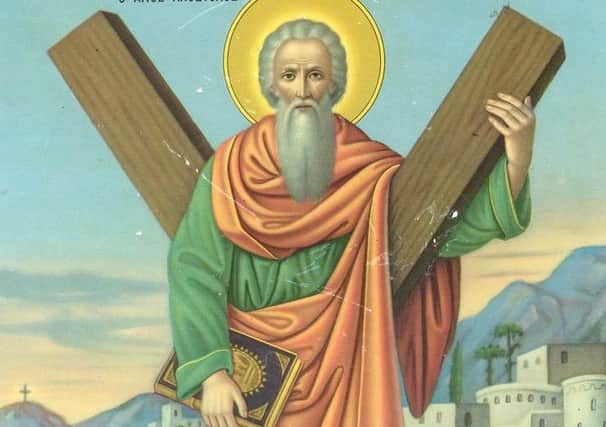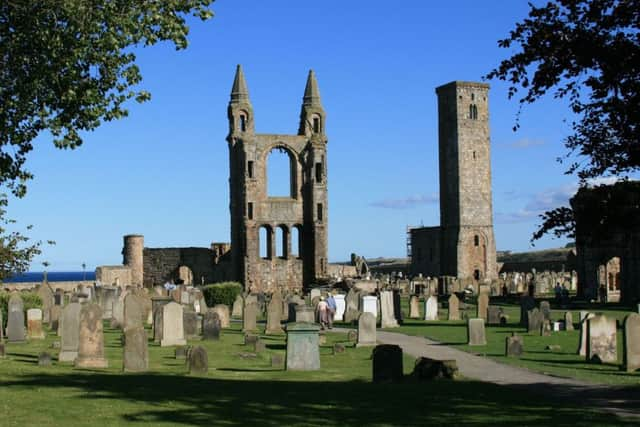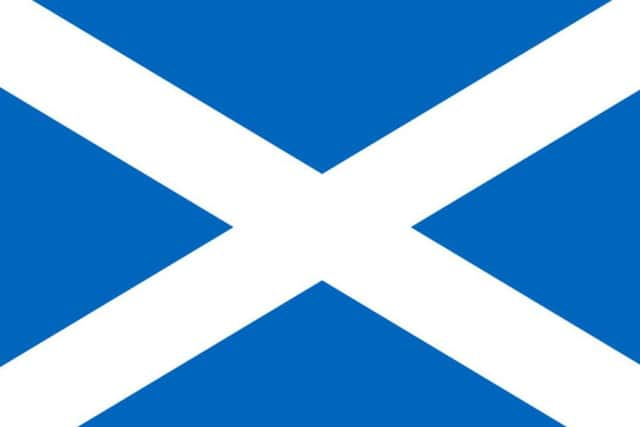Factfile on Scotland's patron saint


Scotland’s patron saint St Andrew was a Galilean fisherman before he and his brother Simon Peter became two of the Twelve disciples of Jesus Christ.
Andrew was born in a town called Bethsaida, in Galilee, which is now part of modern-day Israel.
Advertisement
Hide AdAdvertisement
Hide AdHe is thought to have been crucified in the year 60 AD after a regional Roman governor Aegeas discovered that Andrew had baptised his wife and brother. Aegeas was furious and ordered Andrew’s crucifixion at the Greek town of Patras.


Paintings of Andrew’s martyrdom always show him fixed to an X-shaped cross, the crux decussata. Its name is derived from the Latin for cross, and decussis - having the shape of the numeral X.
It is thought that the Romans rotated the traditional T-shaped cross as an insult. The crux decussata would later serve as the basis for the design of the Saltire flag.
The Emperor Constantine moved Andrew’s remains from Bethsaida 300 years after his death to the city of Constantinople (Istanbul).
Andrew spent a lot of his life spreading Christianity throughout the East and is said to have founded the first Christian church in Constantinople when it was still known as Byzantium. Several Eastern Orthodox countries including Romania, Greece, Ukraine, Cyprus and Russia all name Andrew as their patron saint. The links between these nations and the apostle are fairly clear, but what did St Andrew have to do with Scotland?


Earliest links to Scotland
In the year 357 AD an angel is said to have spoken in a dream to the Greek Monk St Regulus, also referred to as St Rule, and told him to take the bones of St Andrew to the ends of the Earth. St Rule ended up in Scotland (he was close!), his sailing ship washing up on the shores of Fife at a Pictish settlement which is now the town of St Andrews.
Relics of St Andrew which were brought to Scotland included the saint’s right hand, the upper bone of an arm, one kneecap, and one of his teeth.


Advertisement
Hide AdAdvertisement
Hide AdIt is said that St Rule met with Oengus I, king of the Picts (though this is unlikely as Oengus ruled from 732 to 761).
A monastery was built in St Andrews to house the relics, and in 1070 King Robert I ordered the construction of St Regulus Church. Its 33 metre tall tower, St Rule’s Tower, still stands today.
All traces of Scotland’s relics of St Andrew were destroyed during the Reformation, though it is claimed that St Mary’s RC in Edinburgh has a piece of the apostle’s shoulder blade.
Scotland’s patron saint and the Declaration of Arbroath


The story of St Regulus and the relics of St Andrew was passed down through the centuries and served to ‘prove’ that the apostle Andrew was the true patron saint of Scotland. Various Scottish kings had sworn devotion to St Andrew without being officially recognised by Rome.
In 1320 the Declaration of Arbroath was sent to the Pope as an attempt to legitimise Scotland as a independent sovereign state in its own right and protect it from English rule.
Claiming the patronage of St Andrew, whose brother Peter was founder of the Church, served to increase Scotland’s chances of convincing Rome to accept that it as a separate nation.
To add further weight to their cause, nobles also claimed that the Scots were direct descendents of the Scythians, a people who originated from the Black Sea coast in what is today Romania and Bulgaria and that they had been converted by St Andrew many centuries ago.
Advertisement
Hide AdAdvertisement
Hide AdSt Andrew’s Day is celebrated on the 30th of November as this is the day that he is believed to have been crucified in 60 AD.
The Scottish flag
The ‘crux decussata’ was first adapted into the Saltire in the year 1385 when the Scottish Parliament decreed that soldiers serving in France should don a white Saint Andrew’s Cross, both in front and behind, for identification purposes.
It is thought that the Saltire first became Scotland’s national flag in the 14th century. An illustration of the Scottish Saltire dating from the 1540s appears to confirm this.
While the Scottish flag is arguably the most famous to use the cross of St Andrew in its design, there are at least 40 examples of the Saltire and variations of it used in national flags and emblems around the world, such as the flag of Tenerife and the flag of Jamaica.
